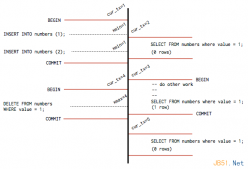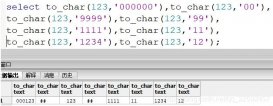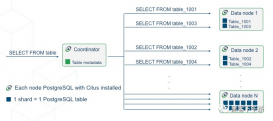一般方法
select count(1) from table_name;
全量扫描一遍表,记录越多,查询速度越慢
新法
PostgreSQL 还真提供了一个这样的途径,那就是系统表 pg_class,这个系统表里头,存储着每个表的统计信息,其中 reltuples 就是对应的表的统计行,统计行的数据是pg有个独立进程,定期扫描不同的表,收集这些表的统计信息,保存在系统表里头。
方法如下:
|
1
2
3
4
5
6
7
|
select reltuples::int as total from pg_class where relname = 'table_name' and relnamespace = (select oid from pg_namespace where nspname = 'schema'); |
新方法不是通用的,如果要求特精确还是使用select count(1),如果是类似分页的,且分页数量超过比较多的,也不是要求特别精准的,这就是一个好方法!
count(1) over 计算记录数
select count(1) over(), * from table_name;
补充
count 是最常用的聚集函数之一,看似简单,其实还是有坑的,如:
1、count(*):返回结果集的行数,是null也统计
2、count(1):和count(*)基本没区别,pg92之前都是扫描全表的,pg92之后增加了index only scan一般会变成扫主键索引,如果没有主键或者是表的列很多的情况下,count(1)快一些,因为不会考虑表的全部字段
3、count(field):返回数据表中指定字段值不等于null的行数
拓展:理解 PostgreSQL 的 count 函数的行为
关于 count 函数的使用一直存在争议,尤其是在 MySQL 中,作为流行度越来越高的 PostgreSQL 是否也有类似的问题呢,我们通过实践来理解一下 PostgreSQL 中 count 函数的行为。
构建测试数据库
创建测试数据库,并创建测试表。测试表中有自增 ID、创建时间、内容三个字段,自增 ID 字段是主键。
create database performance_test;
create table test_tbl (id serial primary key, created_at timestamp, content varchar(512));
生成测试数据
使用 generate_series 函数生成自增 ID,使用 now() 函数生成 created_at 列,对于 content 列,使用了 repeat(md5(random()::text), 10) 生成 10 个 32 位长度的 md5 字符串。使用下列语句,插入 1000w 条记录用于测试。
performance_test=# insert into test_tbl select generate_series(1,10000000),now(),repeat(md5(random()::text),10); INSERT 0 10000000 Time: 212184.223 ms (03:32.184)
由 count 语句引发的思考
默认情况下 PostgreSQL 不开启 SQL 执行时间的显示,所以需要手动开启一下,方便后面的测试对比。
\timing on
count(*) 和 count(1) 的性能区别是经常被讨论的问题,分别使用 count(*) 和 count(1) 执行一次查询。
|
1
2
3
4
5
6
7
8
9
10
11
12
13
14
15
|
performance_test=# select count(*) from test_tbl; count---------- 10000000(1 row) Time: 115090.380 ms (01:55.090) performance_test=# select count(1) from test_tbl; count---------- 10000000(1 row) Time: 738.502 ms |
可以看到两次查询的速度差别非常大,count(1) 真的有这么大的性能提升?接下来再次运行查询语句。
|
1
2
3
4
5
6
7
8
9
10
11
12
13
14
15
|
performance_test=# select count(*) from test_tbl; count---------- 10000000(1 row) Time: 657.831 ms performance_test=# select count(1) from test_tbl; count---------- 10000000(1 row) Time: 682.157 ms |
可以看到第一次查询时候会非常的慢,后面三次速度非常快并且时间相近,这里就有两个问题出现了:
为什么第一次查询速度这么慢?
count(*) 和 count(1) 到底存不存在性能差别?
查询缓存
使用 explain 语句重新执行查询语句
explain (analyze,buffers,verbose) select count(*) from test_tbl;
可以看到如下输出:
|
1
2
3
4
5
6
7
8
9
10
11
12
13
14
15
16
17
18
19
20
21
22
23
|
Finalize Aggregate (cost=529273.69..529273.70 rows=1 width=8) (actual time=882.569..882.570 rows=1 loops=1) Output: count(*) Buffers: shared hit=96 read=476095 -> Gather (cost=529273.48..529273.69 rows=2 width=8) (actual time=882.492..884.170 rows=3 loops=1) Output: (PARTIAL count(*)) Workers Planned: 2 Workers Launched: 2 Buffers: shared hit=96 read=476095 -> Partial Aggregate (cost=528273.48..528273.49 rows=1 width=8) (actual time=881.014..881.014 rows=1 loops=3) Output: PARTIAL count(*) Buffers: shared hit=96 read=476095 Worker 0: actual time=880.319..880.319 rows=1 loops=1 Buffers: shared hit=34 read=158206 Worker 1: actual time=880.369..880.369 rows=1 loops=1 Buffers: shared hit=29 read=156424 -> Parallel Seq Scan on public.test_tbl (cost=0.00..517856.98 rows=4166598 width=0) (actual time=0.029..662.165 rows=3333333 loops=3) Buffers: shared hit=96 read=476095 Worker 0: actual time=0.026..661.807 rows=3323029 loops=1 Buffers: shared hit=34 read=158206 Worker 1: actual time=0.030..660.197 rows=3285513 loops=1 Buffers: shared hit=29 read=156424 Planning time: 0.043 ms Execution time: 884.207 ms |
注意里面的 shared hit,表示命中了内存中缓存的数据,这就可以解释为什么后面的查询会比第一次快很多。接下来去掉缓存,并重启 PostgreSQL。
|
1
2
3
|
service postgresql stopecho 1 > /proc/sys/vm/drop_cachesservice postgresql start |
重新执行 SQL 语句,速度慢了很多。
|
1
2
3
4
5
6
7
8
9
10
11
12
13
14
15
16
17
18
19
20
21
22
23
|
Finalize Aggregate (cost=529273.69..529273.70 rows=1 width=8) (actual time=50604.564..50604.564 rows=1 loops=1) Output: count(*) Buffers: shared read=476191 -> Gather (cost=529273.48..529273.69 rows=2 width=8) (actual time=50604.508..50606.141 rows=3 loops=1) Output: (PARTIAL count(*)) Workers Planned: 2 Workers Launched: 2 Buffers: shared read=476191 -> Partial Aggregate (cost=528273.48..528273.49 rows=1 width=8) (actual time=50591.550..50591.551 rows=1 loops=3) Output: PARTIAL count(*) Buffers: shared read=476191 Worker 0: actual time=50585.182..50585.182 rows=1 loops=1 Buffers: shared read=158122 Worker 1: actual time=50585.181..50585.181 rows=1 loops=1 Buffers: shared read=161123 -> Parallel Seq Scan on public.test_tbl (cost=0.00..517856.98 rows=4166598 width=0) (actual time=92.491..50369.691 rows=3333333 loops=3) Buffers: shared read=476191 Worker 0: actual time=122.170..50362.271 rows=3320562 loops=1 Buffers: shared read=158122 Worker 1: actual time=14.020..50359.733 rows=3383583 loops=1 Buffers: shared read=161123Planning time: 11.537 msExecution time: 50606.215 ms |
shared read 表示没有命中缓存,通过这个现象可以推断出,上一小节的四次查询中,第一次查询没有命中缓存,剩下三次查询都命中了缓存。
count(1) 和 count(*) 的区别
接下来探究 count(1) 和 count(*) 的区别是什么,继续思考最开始的四次查询,第一次查询使用了 count(*),第二次查询使用了 count(1) ,却依然命中了缓存,不正是说明 count(1) 和 count(*) 是一样的吗?
事实上,PostgreSQL 官方对于 is there a difference performance-wise between select count(1) and select count(*)? 问题的回复也证实了这一点:
Nope. In fact, the latter is converted to the former during parsing.[2]
既然 count(1) 在性能上没有比 count(*) 更好,那么使用 count(*) 就是更好的选择。
sequence scan 和 index scan
接下来测试一下,在不同数据量大小的情况下 count(*) 的速度,将查询语句写在 count.sql 文件中,使用 pgbench 进行测试。
pgbench -c 5 -t 20 performance_test -r -f count.sql
分别测试 200w - 1000w 数据量下的 count 语句耗时
| 数据大小 | count耗时(ms) |
|---|---|
| 200w | 738.758 |
| 300w | 1035.846 |
| 400w | 1426.183 |
| 500w | 1799.866 |
| 600w | 2117.247 |
| 700w | 2514.691 |
| 800w | 2526.441 |
| 900w | 2568.240 |
| 1000w | 2650.434 |
绘制成耗时曲线
曲线的趋势在 600w - 700w 数据量之间出现了转折,200w - 600w 是线性增长,600w 之后 count 的耗时就基本相同了。使用 explain 语句分别查看 600w 和 700w 数据时的 count 语句执行。
700w:
|
1
2
3
4
5
6
7
8
9
10
11
12
13
14
15
16
17
18
19
20
21
22
23
24
25
|
Finalize Aggregate (cost=502185.93..502185.94 rows=1 width=8) (actual time=894.361..894.361 rows=1 loops=1) Output: count(*) Buffers: shared hit=16344 read=352463 -> Gather (cost=502185.72..502185.93 rows=2 width=8) (actual time=894.232..899.763 rows=3 loops=1) Output: (PARTIAL count(*)) Workers Planned: 2 Workers Launched: 2 Buffers: shared hit=16344 read=352463 -> Partial Aggregate (cost=501185.72..501185.73 rows=1 width=8) (actual time=889.371..889.371 rows=1 loops=3) Output: PARTIAL count(*) Buffers: shared hit=16344 read=352463 Worker 0: actual time=887.112..887.112 rows=1 loops=1 Buffers: shared hit=5459 read=118070 Worker 1: actual time=887.120..887.120 rows=1 loops=1 Buffers: shared hit=5601 read=117051 -> Parallel Index Only Scan using test_tbl_pkey on public.test_tbl (cost=0.43..493863.32 rows=2928960 width=0) (actual time=0.112..736.376 rows=2333333 loops=3) Index Cond: (test_tbl.id < 7000000) Heap Fetches: 2328492 Buffers: shared hit=16344 read=352463 Worker 0: actual time=0.107..737.180 rows=2344479 loops=1 Buffers: shared hit=5459 read=118070 Worker 1: actual time=0.133..737.960 rows=2327028 loops=1 Buffers: shared hit=5601 read=117051 Planning time: 0.165 ms Execution time: 899.857 ms |
600w:
|
1
2
3
4
5
6
7
8
9
10
11
12
13
14
15
16
17
18
19
20
21
22
23
24
25
|
Finalize Aggregate (cost=429990.94..429990.95 rows=1 width=8) (actual time=765.575..765.575 rows=1 loops=1) Output: count(*) Buffers: shared hit=13999 read=302112 -> Gather (cost=429990.72..429990.93 rows=2 width=8) (actual time=765.557..770.889 rows=3 loops=1) Output: (PARTIAL count(*)) Workers Planned: 2 Workers Launched: 2 Buffers: shared hit=13999 read=302112 -> Partial Aggregate (cost=428990.72..428990.73 rows=1 width=8) (actual time=763.821..763.821 rows=1 loops=3) Output: PARTIAL count(*) Buffers: shared hit=13999 read=302112 Worker 0: actual time=762.742..762.742 rows=1 loops=1 Buffers: shared hit=4638 read=98875 Worker 1: actual time=763.308..763.308 rows=1 loops=1 Buffers: shared hit=4696 read=101570 -> Parallel Index Only Scan using test_tbl_pkey on public.test_tbl (cost=0.43..422723.16 rows=2507026 width=0) (actual time=0.053..632.199 rows=2000000 loops=3) Index Cond: (test_tbl.id < 6000000) Heap Fetches: 2018490 Buffers: shared hit=13999 read=302112 Worker 0: actual time=0.059..633.156 rows=1964483 loops=1 Buffers: shared hit=4638 read=98875 Worker 1: actual time=0.038..634.271 rows=2017026 loops=1 Buffers: shared hit=4696 read=101570 Planning time: 0.055 ms Execution time: 770.921 ms |
根据以上现象推断,PostgreSQL 似乎在 count 的数据量小于数据表长度的某一比例时,才使用 index scan,通过查看官方 wiki 也可以看到相关描述:
It is important to realise that the planner is concerned with minimising the total cost of the query. With databases, the cost of I/O typically dominates. For that reason, "count(*) without any predicate" queries will only use an index-only scan if the index is significantly smaller than its table. This typically only happens when the table's row width is much wider than some indexes'.[3]
根据 Stackoverflow 上的回答,count 语句查询的数量大于表大小的 3/4 时候就会用使用全表扫描代替索引扫描[4]。
结论
不要用 count(1) 或 count(列名) 代替 count(*)
count 本身是非常耗时的
count 可能是 index scan 也可能是 sequence scan,取决于 count 数量占表大小的比例
以上为个人经验,希望能给大家一个参考,也希望大家多多支持服务器之家。如有错误或未考虑完全的地方,望不吝赐教。
原文链接:https://blog.csdn.net/u011944141/article/details/52485132















